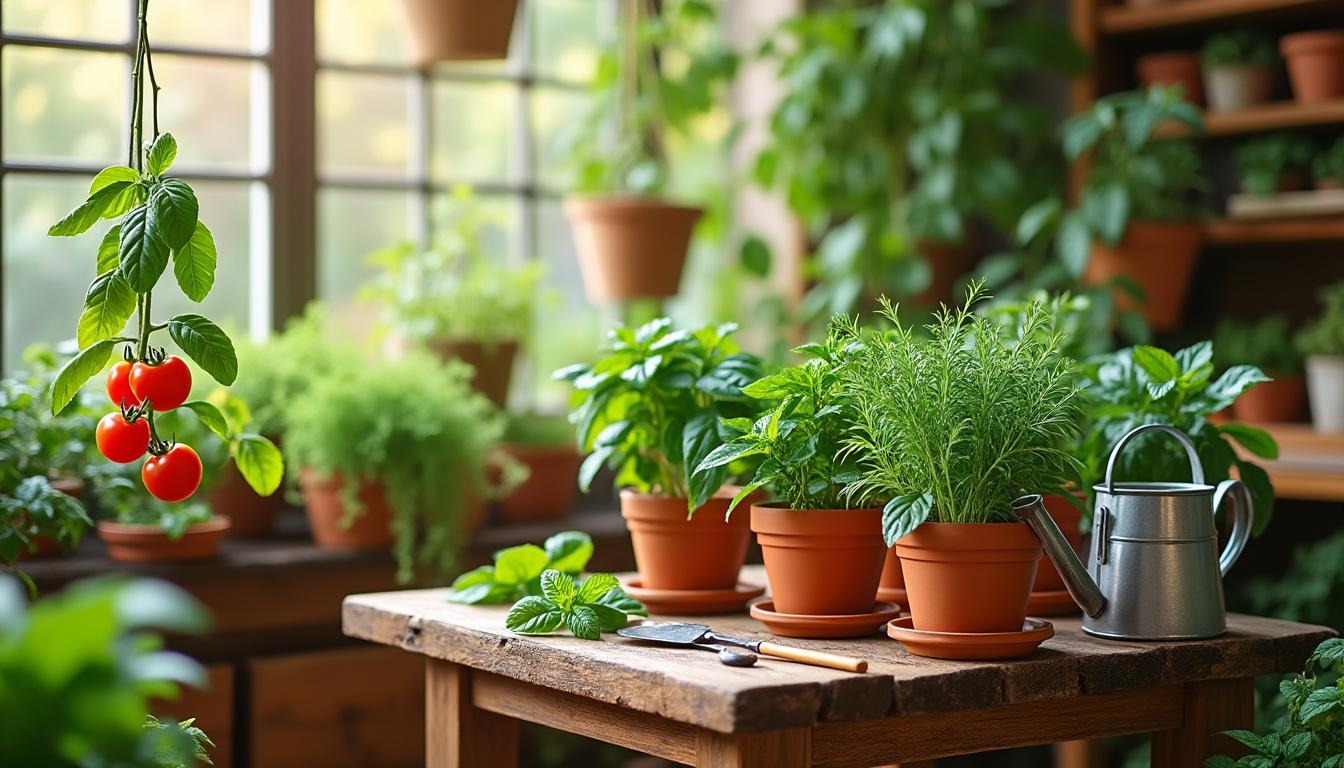Urban living often limits access to outdoor gardening spaces, yet the desire to cultivate fresh, edible plants at home remains strong. Creating a thriving indoor edible garden is now more approachable than ever, even for those without prior gardening experience. From selecting the right herbs and vegetables to understanding essential care practices such as watering and lighting, practical advice is indispensable to ensure success. By tapping into expert insights and leveraging trusted resources, home cooks and plant enthusiasts alike can cultivate vibrant greenery and flavorful harvests within the comfort of their apartments or homes.
Choosing The Right Edible Plants For Indoor Growth
Selecting varieties suited to indoor environments is critical for any edible plant garden. Some plants naturally thrive with minimal space and light, making them ideal companions for kitchens or sunny windowsills.
- Basil and Mint: Known for their resilience and ease of care, these herbs flourish indoors. Basil enjoys abundant sunlight, whereas mint adapts to varying light conditions but requires containment to prevent spreading.
- Dwarf Vegetable Varieties: Tomatoes, peppers, and lemon trees in dwarf forms are perfectly adapted for pots and can grow well under grow lights or near bright windows.
- Leafy Greens and Green Onions: These plants demand moderate care and are productive indoors, offering fresh salad components year-round.
Resources like Burpee and Eden Brothers provide quality seeds and starts tailored for indoor gardeners, while companies such as Miracle-Gro offer plant food formulas optimized for container cultivation.
Understanding Watering And Lighting Needs For Indoor Edibles
Watering practices and light exposure are foundational to plant health. Successful indoor gardening hinges on mimicking natural cycles and meeting specific plant requirements.
- Morning Watering: Watering plants in the morning allows leaves to dry during daylight, reducing risks of fungal diseases and root rot.
- Light Preferences: Most edible plants need bright, indirect sunlight or supplemental grow lights such as full-spectrum LED options from Gardener’s Supply Company or AeroGarden.
- Monitoring: Incorporate reminders for watering schedules and adjust as plants grow. Online gardening extensions and platforms like The Sill offer tailored advice for local climates and indoor conditions.
Platforms such as Seed Savers Exchange provide extensive data on plant-specific care, making them invaluable for refining cultivation techniques. Proper use of terra cotta pots aids in regulating moisture, supporting healthier root systems.
Starting Your Indoor Garden: Seedlings Over Seeds
Beginning with established plants, or starts, offers advantages such as faster growth and immediate engagement with harvesting potential. This approach mitigates the challenges often encountered when germinating from seed.
- Usage of Seedlings: Available at home improvement retailers like Home Depot and Lowe’s or farmers’ markets, starts provide a head start in cultivation, particularly for beginners.
- Space Optimization: Using plant stands and shelves can maximize available areas, a strategy often recommended by House Plant Shop and Click and Grow for urban gardens.
- Gradual Progression: Attempt seed growing after mastering the care of established starts to deepen horticultural skills.
Choosing starts also aligns with ecological considerations, allowing for more mindful plant selection and reduced waste compared to starting multiple seeds without success.
Integrating Professional Tips And Resources For Ongoing Success
Transitioning from novice to confident indoor gardener involves continuous learning and adaptation. Leveraging expert knowledge and community support optimizes outcomes.
- Consult Reputable Gardening Extensions: State university resources provide region-specific guidelines on soil, water, and light needs.
- Engage With Online Communities: Social media platforms such as Instagram feature influencers like Reena Gardner who share practical insights and troubleshooting tips.
- Use Quality Gardening Supplies: Providers such as The Sill and Gardener’s Supply Company supply robust infrastructure and supplies that facilitate plant health and ease maintenance.
Integrating high-quality soil, pots made from sustainable materials, and appropriate nutrients from brands like Miracle-Gro enhances longevity and productivity of the indoor garden.
Step-By-Step Indoor Edible Garden Maintenance Routine
| Task | Frequency | Purpose |
|---|---|---|
| Watering | Daily to every 3 days (morning) | Maintain soil moisture without overwatering |
| Light Adjustment | Weekly | Optimize plant exposure to sunlight or grow lights |
| Pruning | Biweekly | Encourage healthy growth and prevent overcrowding |
| Soil Nutrient Check | Monthly | Ensure plants receive balanced nutrients for optimal development |
Top Common Questions About Indoor Edible Gardening
- What are the easiest edible plants to start indoors?
Mint and basil are excellent starting points due to their adaptability and low maintenance requirements. - Is supplemental lighting necessary for indoor edible plants?
In many cases yes; full-spectrum LED grow lights provide essential light quality for photosynthesis when natural sunlight is insufficient. - How often should indoor edible plants be watered?
Morning watering every 1 to 3 days, depending on soil moisture and plant species, helps prevent disease and supports healthy growth. - Can I grow vegetables indoors beyond herbs?
Indeed, dwarf tomatoes, peppers, and leafy greens grow well indoors with adequate light and space. - Where can I buy quality seedlings for indoor gardening?
Check local farmers’ markets, garden centers, or trusted retailers like The Sill and House Plant Shop for healthy starts.
To expand knowledge and gather more practical tips on indoor gardening, resources like gardening tips for beginners and best indoor plants for beginners are highly recommended. Additionally, insights at container planting ideas offer useful guidance for maximizing limited spaces.

